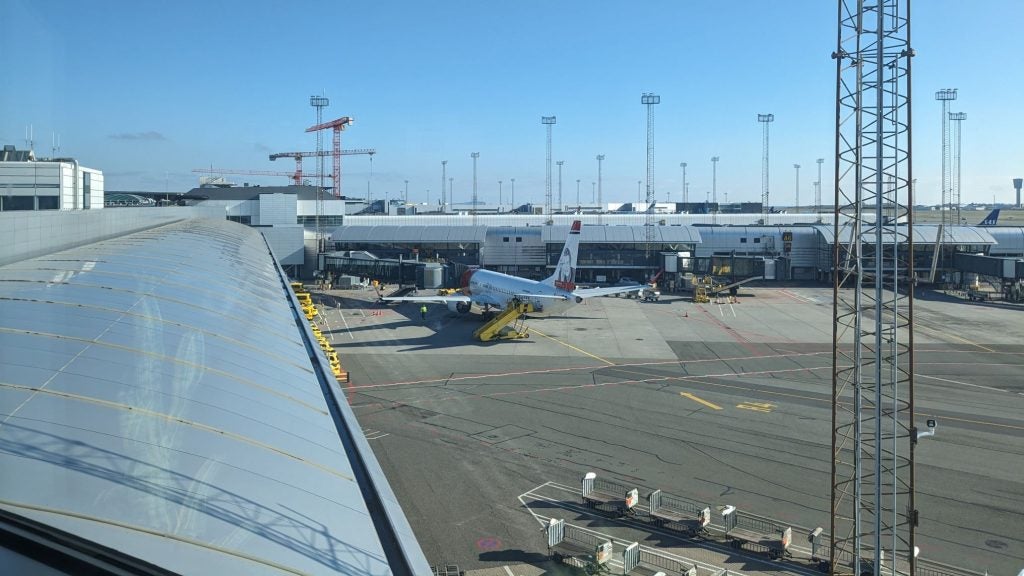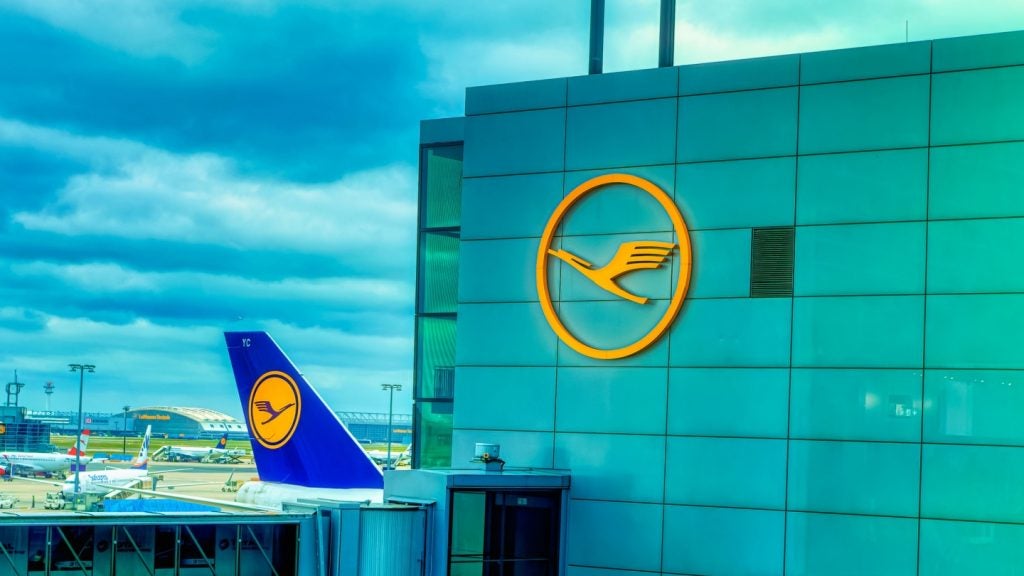
The aviation industry is continuing to grow following the decimation of the pandemic. According to IATA, global air traffic is now at 98.2% of pre-Covid-19 levels. Passenger numbers are increasing, but those passengers are coming back with new demands.
2023 was the year of convenience and safety, with travellers looking for an easier, streamlined process through airports. The use of biometric technology helped facilitate this, but we also saw the emergence of new smart passenger management systems, as airports around the world rolled out new solutions to make the curb-to-gate journey more efficient.
Airlines continue to work on their sustainability credentials, with Sustainable Aviation Fuel (SAF) dominating headlines this year. The efforts to decarbonise aviation will no doubt continue into the next year but might manifest in new ways, through emerging transport modes such as electric vertical take-off and landing (eVTOL) aircraft or Urban Air Mobility (UAM) vehicles.
So, what will the next year hold for the aviation sector, and what are the key industry themes to keep an eye on? We hear from several industry experts to learn what they think 2024 holds for airports and airlines worldwide when it comes to new technology, passenger processing, airport operations, and more.
“AI will be increasingly pivotal for airport transformation.”
“Airports are evolving into more dynamic ecosystems, mirroring organisms that instinctively sense, adapt, and respond to their environment in real-time. By leveraging emerging technologies, airports will aim to monitor and respond to fluctuations in passenger traffic, flight schedules, weather, and more. However, challenges will remain in fostering collaboration across the entire ecosystem, where greater communication and data sharing is needed between stakeholders – such as airlines, ground handlers, and security. This connection is key to driving greater industry progress.
See Also:

“AI will be increasingly pivotal for airport transformation in three different ways. Digital AI assistants will be relied on for operational support and insights on daily tasks; forecasting software will bolster predictive planning with monitoring of things such as baggage processes, staff availability, and energy use; and AI decision support will be used for instantaneous data analysis that mitigates crises and reduces bottlenecks. Additionally, Internet of Things (IoT) devices and blockchain technology will be integrated into AI systems to supplement these capabilities – sharing essential information securely with airport stakeholders.
How well do you really know your competitors?
Access the most comprehensive Company Profiles on the market, powered by GlobalData. Save hours of research. Gain competitive edge.

Thank you!
Your download email will arrive shortly
Not ready to buy yet? Download a free sample
We are confident about the unique quality of our Company Profiles. However, we want you to make the most beneficial decision for your business, so we offer a free sample that you can download by submitting the below form
By GlobalData“Adoption of emerging technologies will also lay the groundwork for personalised customer experiences. More AI-powered chatbots will be introduced to enhance customer service, guiding passengers through a larger portion of their airport journey – such as suggested transport routes to the airport and dinner recommendations at each terminal. Passengers will control the level of personalisation and tailoring of services. This shift will also lead to personalised communication and advice for airport arrival and boarding times based on individual needs and preferences.
“Airports are becoming more similar to cities, with extensive infrastructure, technology, and sustainability needs. Next year, airports will aim to resemble sustainable smart cities in how they run – implementing alternatives such as electric busses, electric ground handling equipment and SAF. Airports will aim to increase efficiency and adaptability across the ecosystem to ensure fewer resources are wasted too – this will be critical in reducing the sector’s environmental impact and increasing climate resiliency.”
“With more focus on energy and carbon-efficient transport, new patterns will emerge.”
“As passenger numbers are returning to pre-pandemic levels around the world – indeed, in some places they already did so in 2023 – the industry is facing an ever-more challenging future, with the urgent need to address future industry changes. I see this as sitting under four broad areas.

“First is the need to address climate change and to decarbonise airports, surface access, and flight. This is coupled with the emerging threats of changing weather patterns and rising sea levels that will require smart adaptation and mitigation. Meeting these challenges, such as the rapidly increasing electricity demand at airports and among neighbouring users, will require new technologies, new approaches to regulation and flexible and adaptive solutions across the industry, to ensure that money is spent wisely.
“Resilience of the aviation system was severely tested during the Covid-19 pandemic. As the industry returns to pre-pandemic levels, it will be looking at how future shocks can be better predicted and prepared for. This may include commercial or financial shocks, infrastructure risks, or those arising from health or climate disruptions.
“As passenger growth returns and calls for additional capacity and connectivity arise, airports and airlines will be looking for cost-effective and sustainable ways to meet their needs. This will amplify staff constraints across the industry, place additional pressure on relatively scarce funds and mean that ever more innovative funding, development, and operational solutions need to be established. This will be even more important as countries increasingly demand better opportunities to support the social and economic development of their populations and regions.
“With more focus on energy and carbon-efficient transport, and with increasing demand for mobility, new patterns of transport will emerge and incentives that move passengers to the least impactful modes will become more important. One such example of a new technology that may be coming to the fore is advanced urban air mobility.
“Underpinning all these trends is the need to deliver solutions, in an uncertain and cash-constrained world, in a way that is adaptable, flexible, efficient, and sustainable. With climate change, traffic growth, and technology changes accelerating the pace of change it is critical to an extent never seen before.”
“Pre-pandemic air travel is over, especially in Europe.”
“As global air travel surpasses 2019 in 2024, it could be tempting to say we are returning to trend; but actually, we are far from it. Below the headline totals, there are significant changes underway, and these will shape the next era of aviation for many years to come. Pre-pandemic air travel is over, especially in Europe, but this doesn’t have to be a bad thing. The sector that is being shaped before our eyes has the potential to be significantly more efficient, more tailored to customer expectations and significantly less carbon-intensive.

“Airlines are bracing themselves for ramped-up operating costs stemming from supply chain and labour challenges, while many airports are having to contemplate how to become an airport which can no longer rely on steady growth of passengers ad infinitum to make its economics work. We are seeing innovative commercial models emerging, diversifying airport revenues from airline and passenger fees, and exploring new business models that not only align with but can even drive the energy transition.
“2024 will see another step change in the production of SAF – possibly exceeding 1 million tonnes for the first time – as Europe moves towards a mandate starting in 2025. However, this is still a drop in the ocean against what will be required by 2030 and beyond, and we predict further rapid changes in the space as producers, investors, airlines and corporates jostle for the best position in this new market.”
“Seeking small shifts in productivity will be key in 2024.”
“As we look to 2024, the sector is poised for transformation, shaped by a mix of macro-economic and sub-sector trends. In the aftermath of Covid-19 and the enduring impact of Brexit, the industry continues to grapple with a reduced workforce capacity, accelerating digitisation, and automation. As companies look to streamline their operations, they will turn to technology solutions such as AI, quantum computing, and machine learning to improve their service delivery and reduce costs.

“Faced with mounting passenger volumes, airports will continue to be confronted with the delicate duty of balancing demand with empathetic rostering and shift patterns in 2024 to ensure the wellbeing of their workforce. Finding ways to enhance workforce capacity and create a streamlined operational environment without incurring extra costs will be vital when dealing with this ongoing challenge. This will facilitate a transition from reactive to proactive approaches, mitigating the risk of airport chaos due to minor changes in staffing or short-notice absence. Seeking small shifts in productivity will be key in 2024.
“Overall, 2024 holds a landscape of change and opportunity for the sector. The industry’s resilience and adaptability will shape its trajectory, ushering in an era of heightened efficiency, sustainability, and technological advancement underpinned by highly interoperable, best-of-breed technologies. Organisations that can stay ahead of these trends and adapt to new market conditions will be well-positioned to thrive in the years ahead.”
“Consumers now expect fast deliveries, making the air freight industry’s role indispensable.”
“The surge in online shopping, accelerated by the pandemic, has become a new normal for consumers. As a result, ecommerce has become a pivotal force in the market and is set to be a catalyst for further growth in 2024.

“Consumers now expect fast, next-day deliveries, making the air freight industry’s role indispensable in sustaining a seamless ecommerce market. This comes in what is anticipated to be a predominantly stagnant year for growth in the supply chain industry.
“Looking back at 2023, demand declined as the cost-of-living crisis gripped the nation. However, the popularity of annual sales events like Black Friday has increased as people look for ways to make savings. Transforming from a single-day occurrence into a month-long peak, Black Friday now boasts larger discounts and an extensive array of choices. Consequently, effective planning for extended peak periods is imperative for air cargo companies.
“To efficiently manage airspace during peak seasons, businesses must uphold continuous communication with clients and ecommerce partners, ensuring the utmost precision in forecasting. This involves the implementation of block space agreements and capacity agreements with strategic airline partners, accompanied by sustained close communication to guarantee the necessary capacity.”
This article was originally published in our digital magazine, Airport Industry Review







